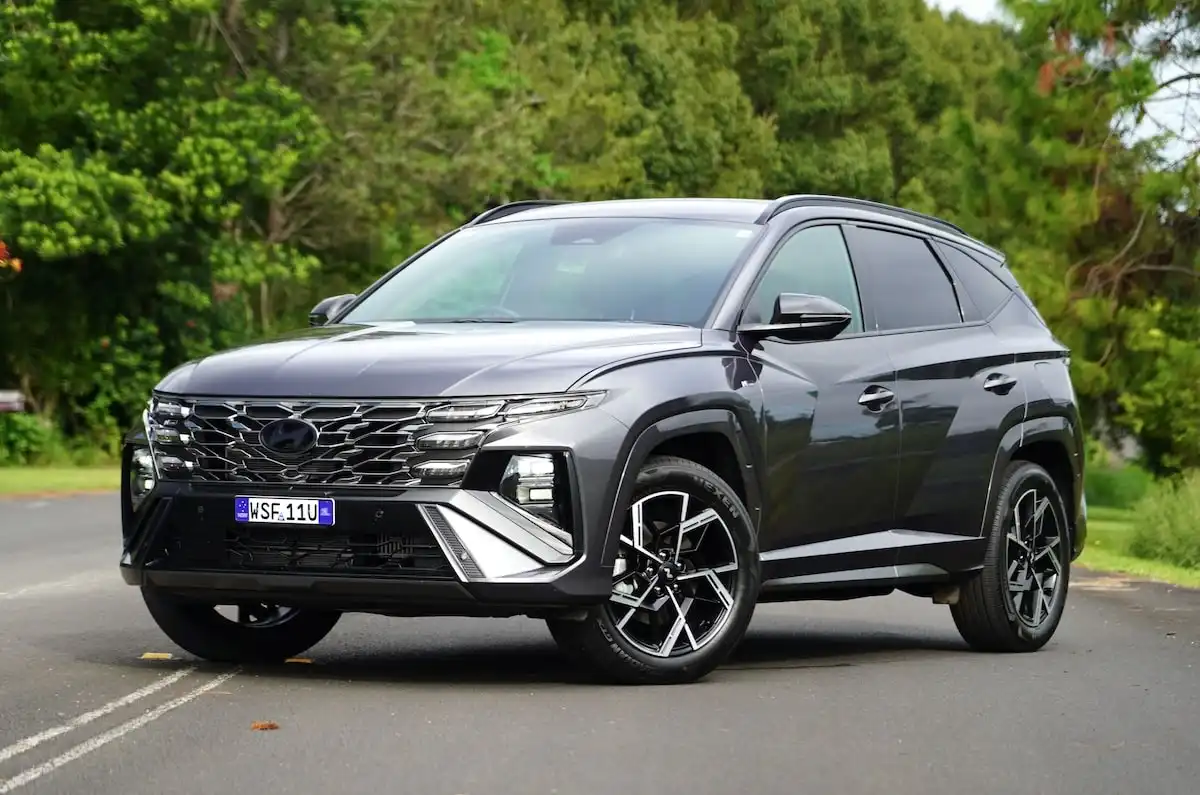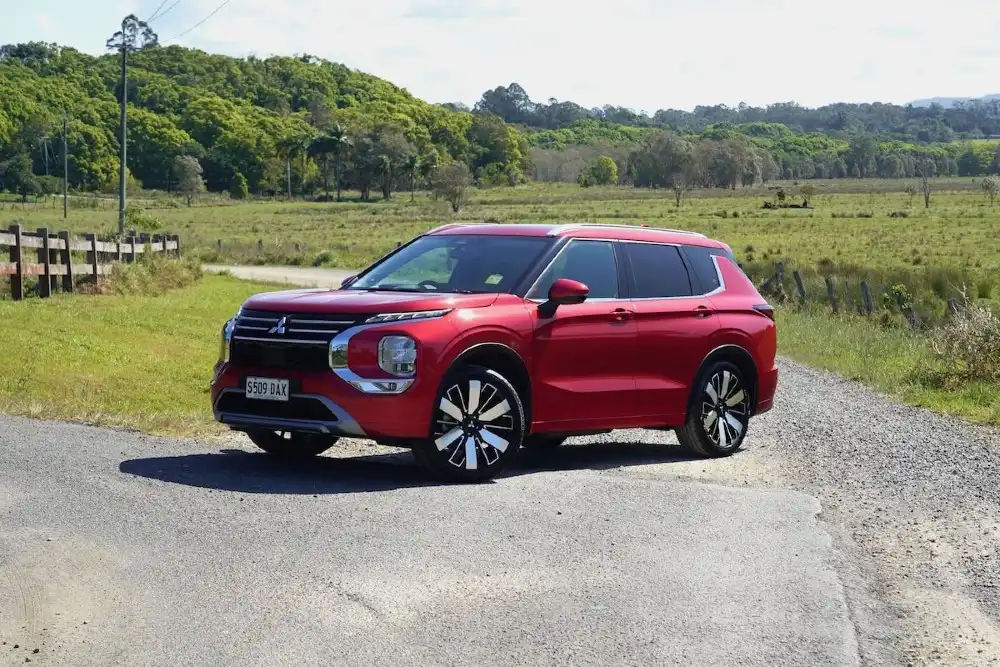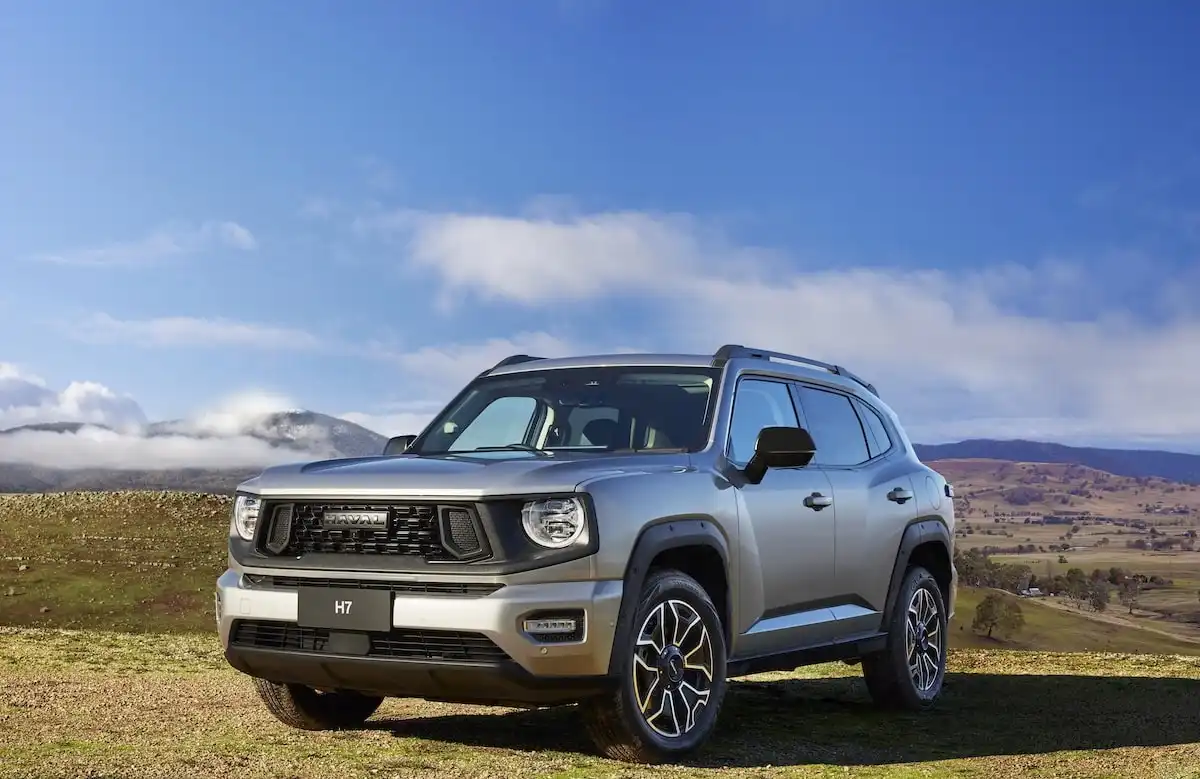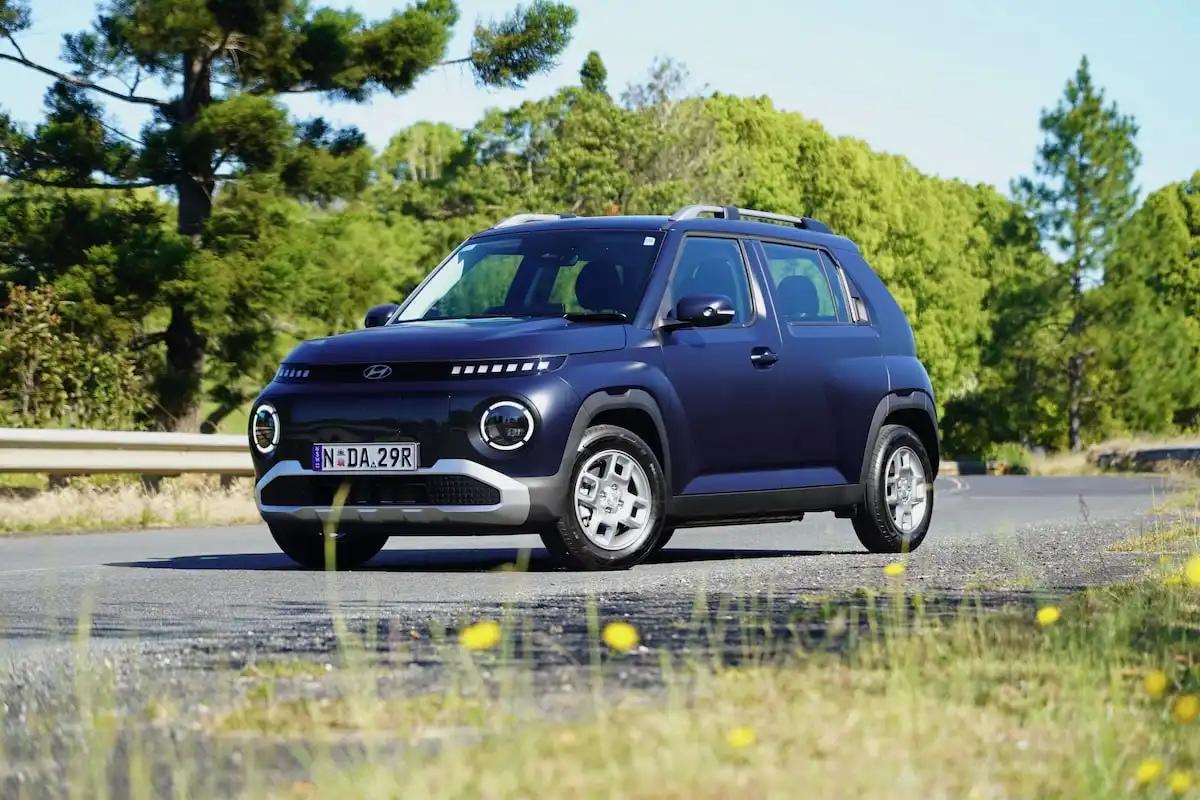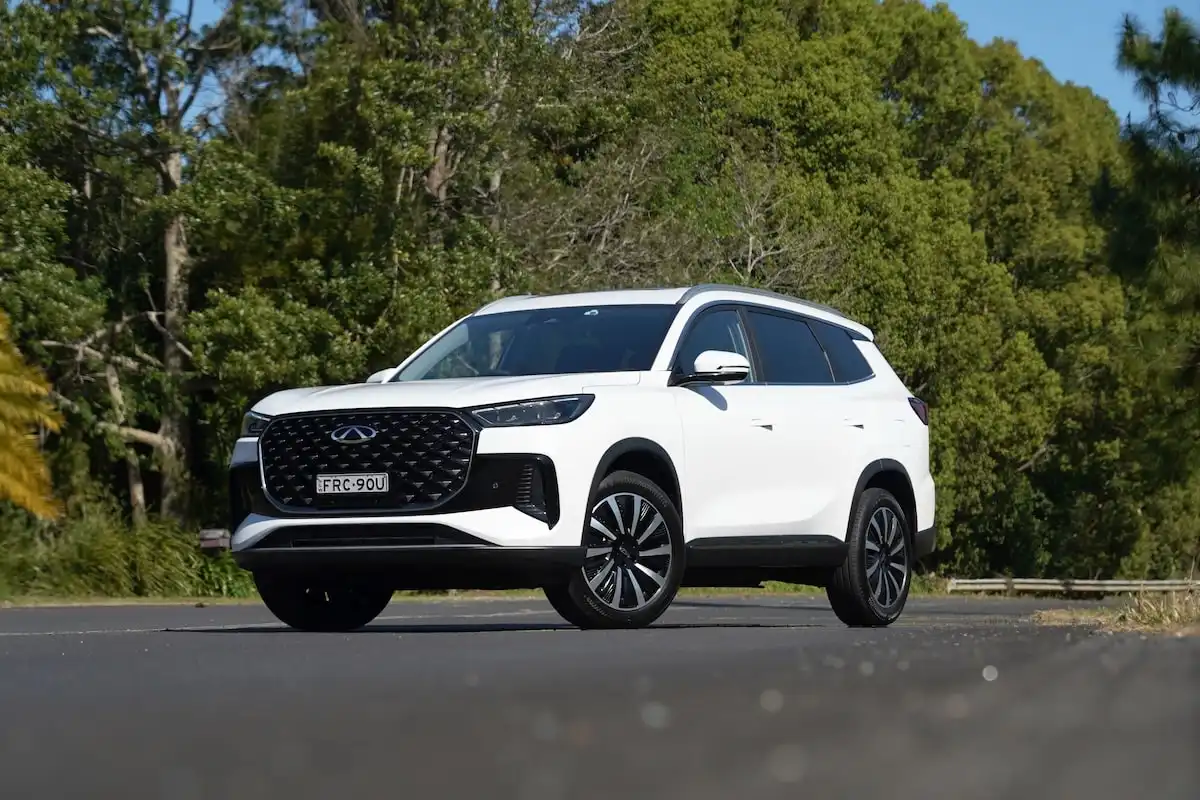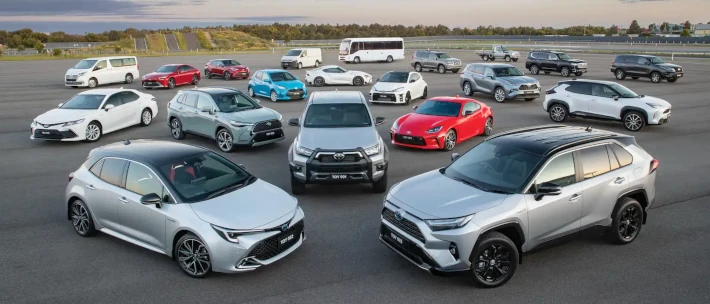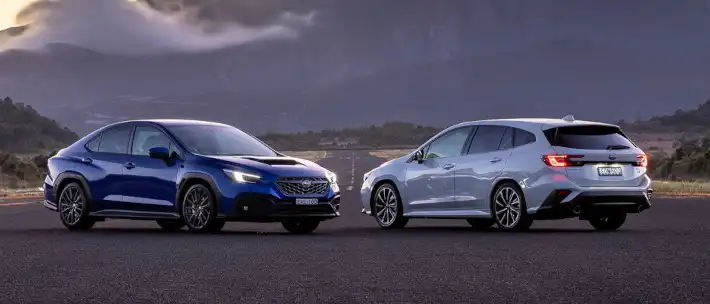It’s a staple of the best-selling vehicles in Australia and one of the most popular medium SUVs thanks to its family-friendly appeal.
For 2025, the Tucson’s appeal has been bolstered once again with the addition of hybrid versions across the range, at the expense of the outgoing turbo-diesel engine.
Within the Tucson range, there’s no less than 17 options, meaning it can be difficult to know which is your best option and whether Hyundai’s hybrid tech is worth the $6,000 premium over the base petrol engine.
To make things more confusing, there’s an entry-level version of the hybrid, so just how well does the Elite N Line AWD justify its position in the lineup and do you really need all-wheel drive?
To find out, we got behind the wheel of the high-ranking Tucson Elite N Line Hybrid AWD and we’ll be breaking down everything you need to know.
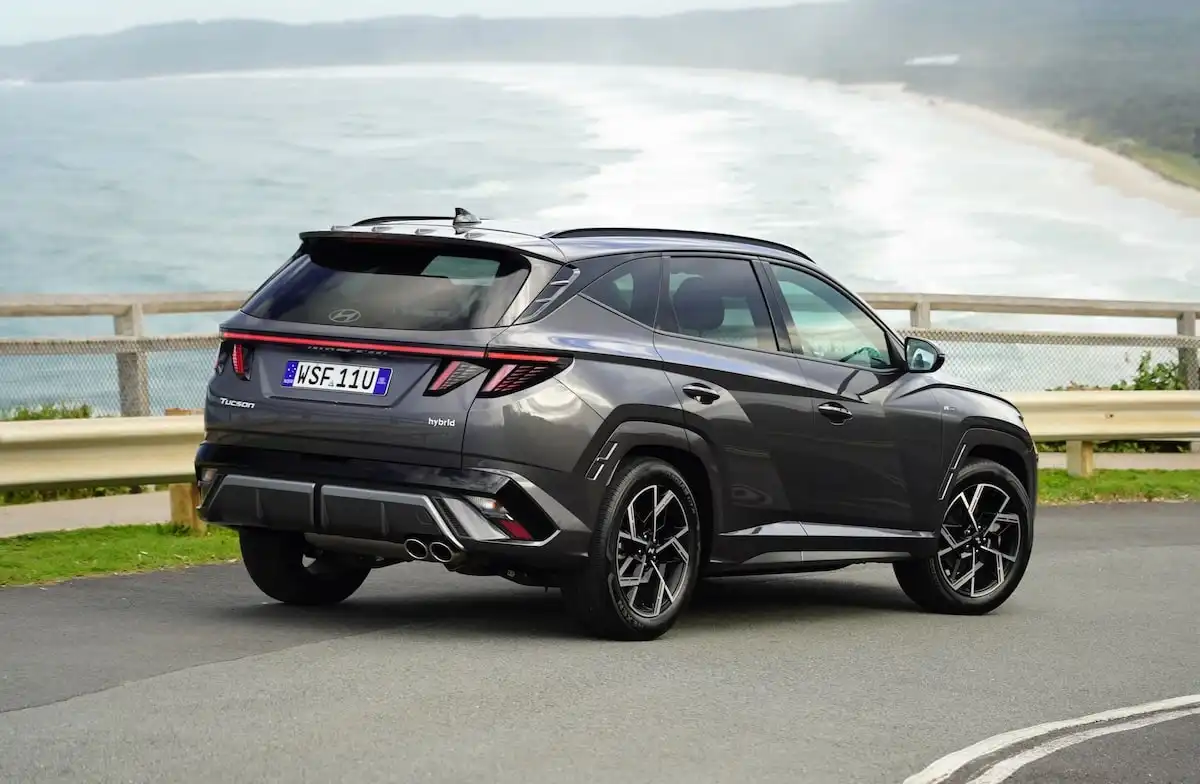
Hyundai Tucson Competition
Hyundai Tucson |
VS |
Kia Sportage |
| Toyota RAV4 | ||
| Mazda CX-5 | ||
| Nissan X-Trail | ||
| GWM Haval H6 | ||
| Honda CR-V | ||
| Volkswagen Tiguan | ||
| Skoda Karoq |
How Much Does the Hyundai Tucson Cost?
Prices for the MY25 Hyundai Tucson range kick off from $39,100 for the entry-level Tucson 2WD and stretch out to $61,100 for the range-topping Tucson N Line Premium Hybrid.
Our review vehicle, the Tucson Elite N Line Hybrid AWD is priced at $55,100.
-
Tucson 2.0 2WD - $39,100
-
Tucson Elite 2.0 2WD - $44,100
-
Tucson Hybrid 2WD - $45,100
-
Tucson N Line 2WD - $45,100
-
Tucson Elite 1.6T 2WD - $46,100
-
Tucson Elite 1.6T AWD - $48,600
-
Tucson Elite N Line 1.6T 2WD - $48,600
-
Tucson N Line Hybrid 2WD - $49,100
-
Tucson Elite Hybrid 2WD - $50,100
-
Tucson Elite N Line 1.6T AWD - $51,100
-
Tucson Elite Hybrid AWD - $52,600
-
Tucson Elite N Line Hybrid 2WD - $52,600
-
Tucson Elite N Line Hybrid AWD - $55,100 (tested)
-
Tucson Premium 1.6T AWD - $55,600
-
Tucson Premium N Line 1.6T AWD - $57,100
-
Tucson Premium Hybrid AWD - $59,600
-
Tucson Premium N Line Hybrid AWD - $61,100
Keep in mind that these prices are subject to change and do not include on-road costs.

How Much Can OnlineAuto Save You?
Using OnlineAuto’s car buying service, you could save thousands on your next car with the help of our team of car-buying specialists.
Hyundai Tucson Elite N Line Hybrid AWD Specifications
| Model Date | 2025 |
| Make | HYUNDAI |
| Model | TUCSON |
| Series | NX4.V3 MY25 UPDATE |
| Variant | ELITE HYBRID N LINE (AWD) |
| Body | 4D WAGON |
| Fuel type | UNLEADED PETROL/ELECTRIC |
| Transmission | 6 SP AUTOMATIC |
| Drive | AWD |
| Engine | TGDi |
| Engine capacity | 1598 |
| Engine configuration | DUAL OVERHEAD CAM / 16 valves |
| Engine RPM | 5500.0 / 1500.0 |
| Cylinders | T4 |
| Torque | 265 |
| KW | 132 |
| Fuel tank size | 52.0 |
| Fuel usage specs | 5.3 / 0 |
| CO2 | 121 |
| ANCAP security rating | 5 |
Get in touch with one of our Car Buying Specialists today.
Request a quoteWhat Features Does the Hyundai Tucson Elite N Line Have?
The high-ranking Tucson Elite range comes packed to the gills with equipment.
Headlining the list is a set of 18-inch alloys, leather upholstery with heated front seats, a dark chrome grille, a 12.3-inch digital instrument cluster, 10-way power adjustment for the pilot’s seat, dual-zone climate control, front-mounted parking sensors, a powered boot lift, keyless entry & start, wheel-mounted paddle shifters and a shift-by-wire gear lever.
You also pick up all the goodies you’ll find in the base Tucson, which means there’s LED head & tail lights, roof rails, a wireless charging pad, a leather-wrapped steering wheel & gear lever, adaptive cruise control, a 6.6-inch climate control display and a rear-view monitor with rear parking sensors.
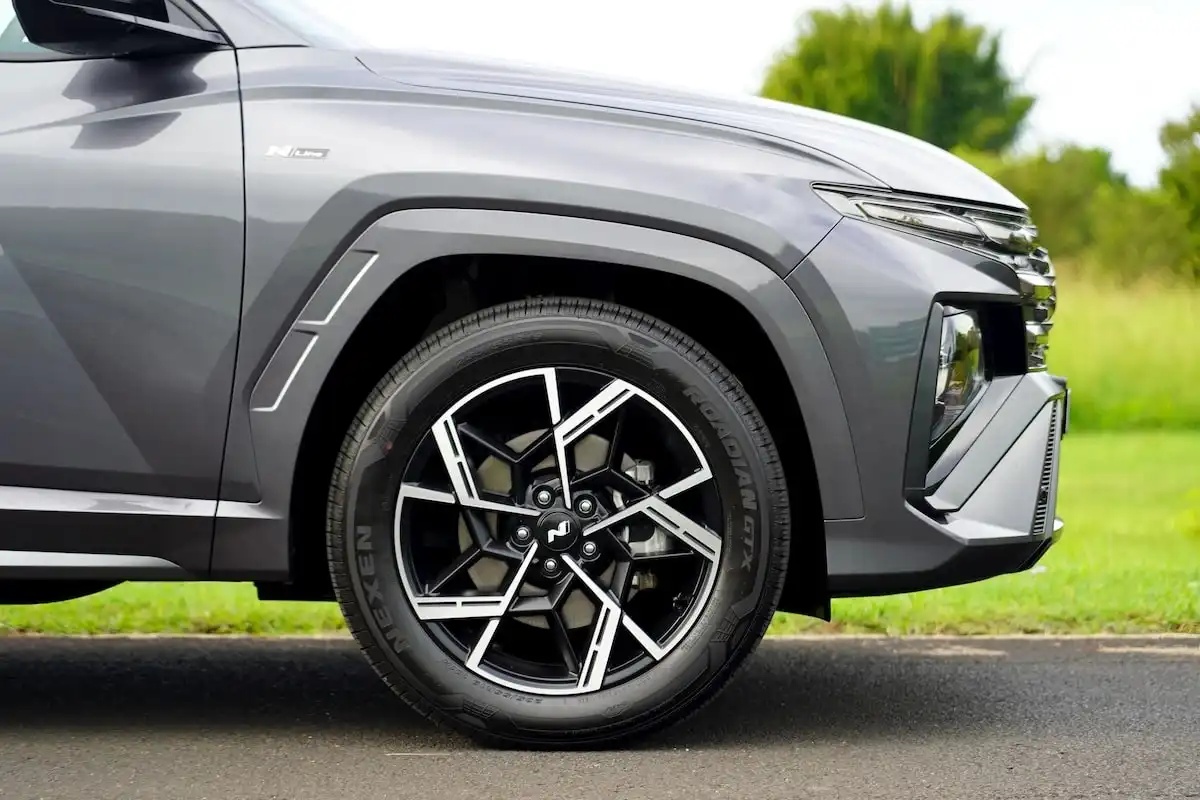
Our review vehicle was also fitted with Hyundai’s optional N Line package which adds a range of goodies, including bespoke 19-inch alloys, leather and suede upholstery, upgraded projector LED headlights and a bespoke N Line bodykit featuring sharper front & rear bumpers, a rear spoiler, daytime running lamps and a skid plate.
@onlineauto.com.au Find out how much you can save on your next Hyundai with OnlineAuto! 💰 Hyundai Tucson Elite N-Line Hybrid Quick Look! 🔵Five-year/unlimited kilometre warranty 🔵Eight-year/160,000km battery warranty 🔵5.3L per 100km fuel economy figures 🔵582 - 1,903L boot space 💬 Talk to one of us today & get a great deal with OnlineAuto! #OnlineAuto #Hyundai #Tucson #HybridCar #SUV #CarUpgrade #CarReview #TestDrive #BestDeals #NewCar #Cartok ♬ original sound - OnlineAuto.com.au
Hyundai Tucson Connectivity & Infotainment Features
All members of the MY25 Tucson range, including our Elite N Line review unit are packaged with Hyundai’s 12.3-inch touchscreen infotainment system sitting proudly atop the dashboard.
It’s a great unit with crisp graphics, high brightness levels and a particularly user-friendly nature thanks to Hyundai’s curated menus that, while deep and feature-rich, remain easy to navigate through.
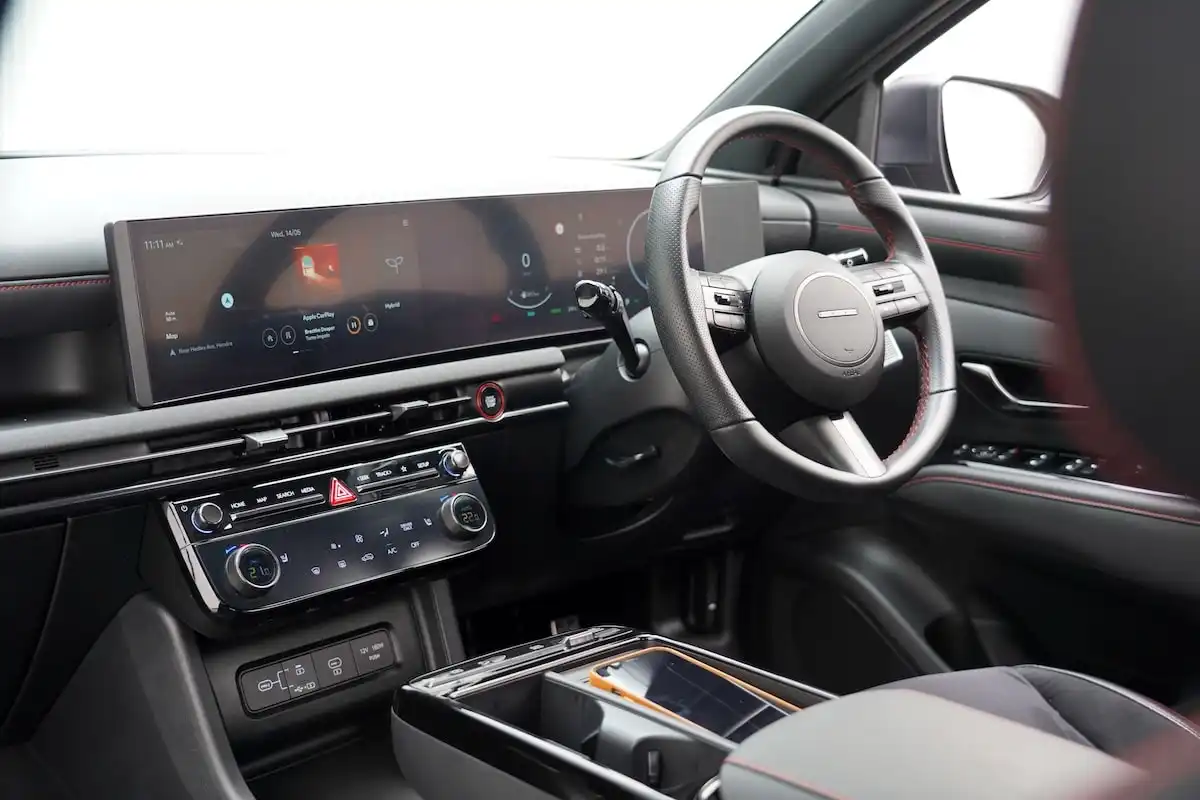
You’ll find AM/FM & DAB+ digital radio all bundled in alongside four USB-C charging ports, with the Tucson Elite picking up factory satellite navigation as well as over-the-air software updates for the 12.3-inch unit.
Most of the Tucson range picks up a six-speaker sound system, while the premium range receives an upgraded BOSE sound system; some added audio power would have been a nice addition to the Elite, but the six-speaker unit gets the job done fine.
The Tucson range receives Hyundai’s Bluelink connected services suite, offering remote vehicle controls, emergency calls and location tracking while the Elite picks up added functionality, like live traffic navigation and voice recognition.
Buyers pick up a five-year subscription to the Hyundai Bluelink suite of services.
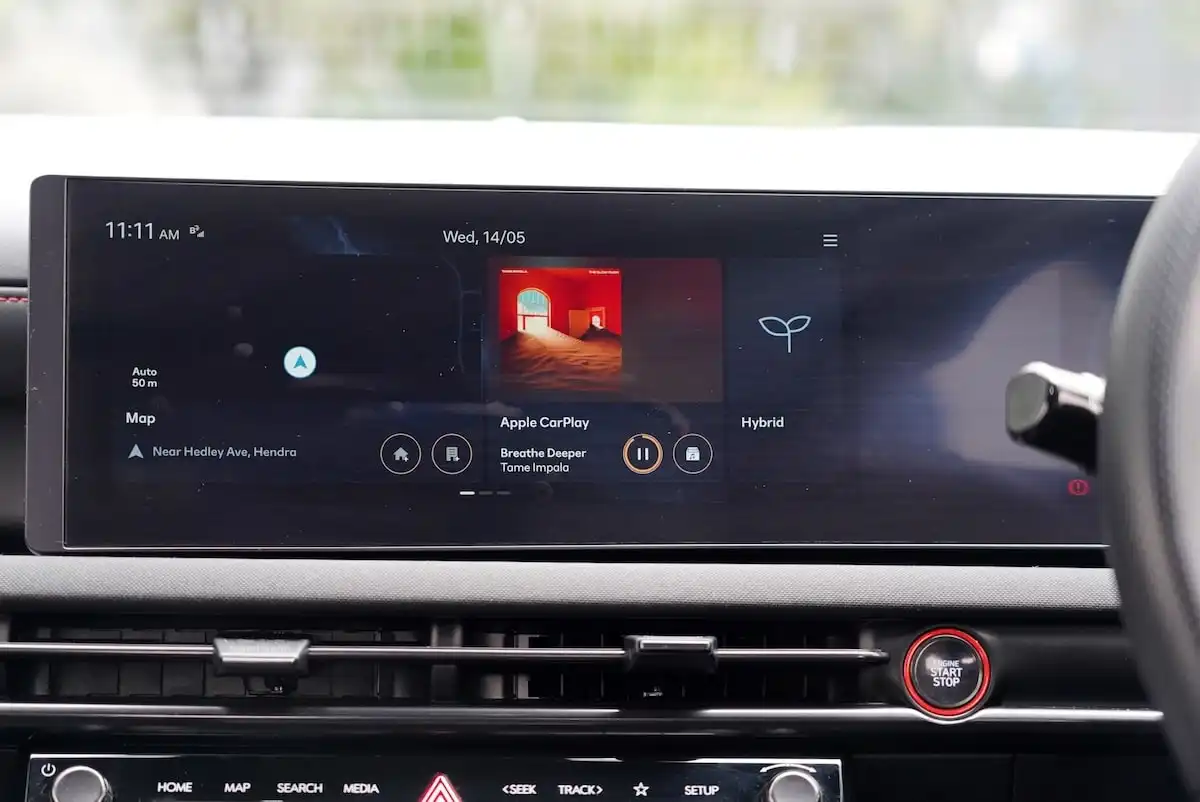
Does the Hyundai Tucson Elite N Line Have Wireless Apple CarPlay & Android Auto?
All versions of the MY25 Tucson range, from the base model through to the range-topping Premium, receive wireless smartphone mirroring for both Apple CarPlay and Android Auto.
That means you can simply climb aboard, place your phone on the wireless charging pad - or keep it in your pocket - and you’ll have access to your contacts, music, podcasts and preferred navigation app.
Hyundai has a particularly quick and simple process to pair your phone wirelessly and connects with your phone quickly while starting up the vehicle, with no drop-outs in the connection noted after a week behind the wheel using wireless Apple CarPlay.
You also have the option of connecting and charging your phone via one of the four USB-C ports hiding inside the cabin.
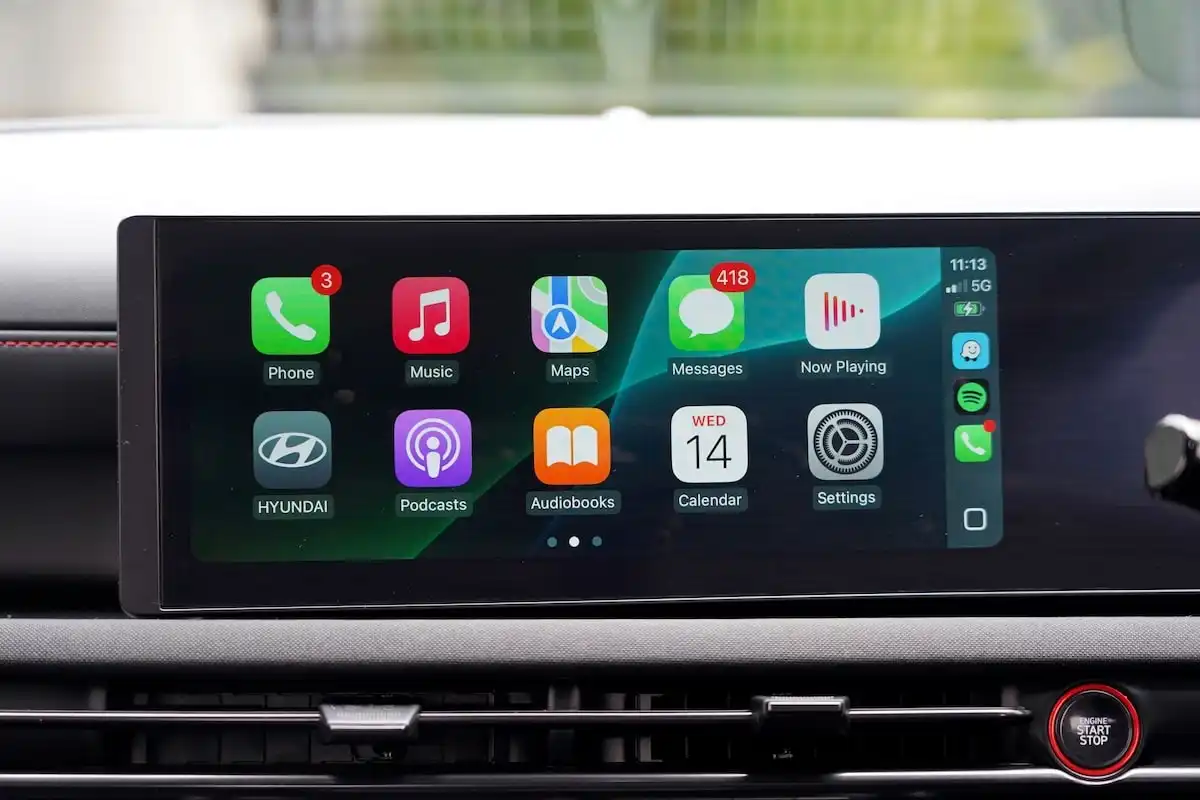
Is the Hyundai Tucson Elite Hybrid Comfortable to Drive?
The Tucson is a well-rounded package that is particularly smooth around town thanks to its petrol-electric hybrid powertrain, but it’s not perfect.
It’s smooth around town, though the larger 19-inch wheels fitted as part of the N Line package have an impact on the overall ride quality.
Under the bonnet, Hyundai’s Hybrid AWD lineup picks up a 1.6-litre turbocharged four-cylinder petrol unit paired with an electric motor and a 1.49kWh battery pack that supplies juice for the e-motor.
Combined power outputs stand at a very healthy 172kW, with peak torque figures of 367Nm, meaning the Tucson Hybrid AWD has a nice little pep in its step and is capable of braked towing figures of 1,900kg.
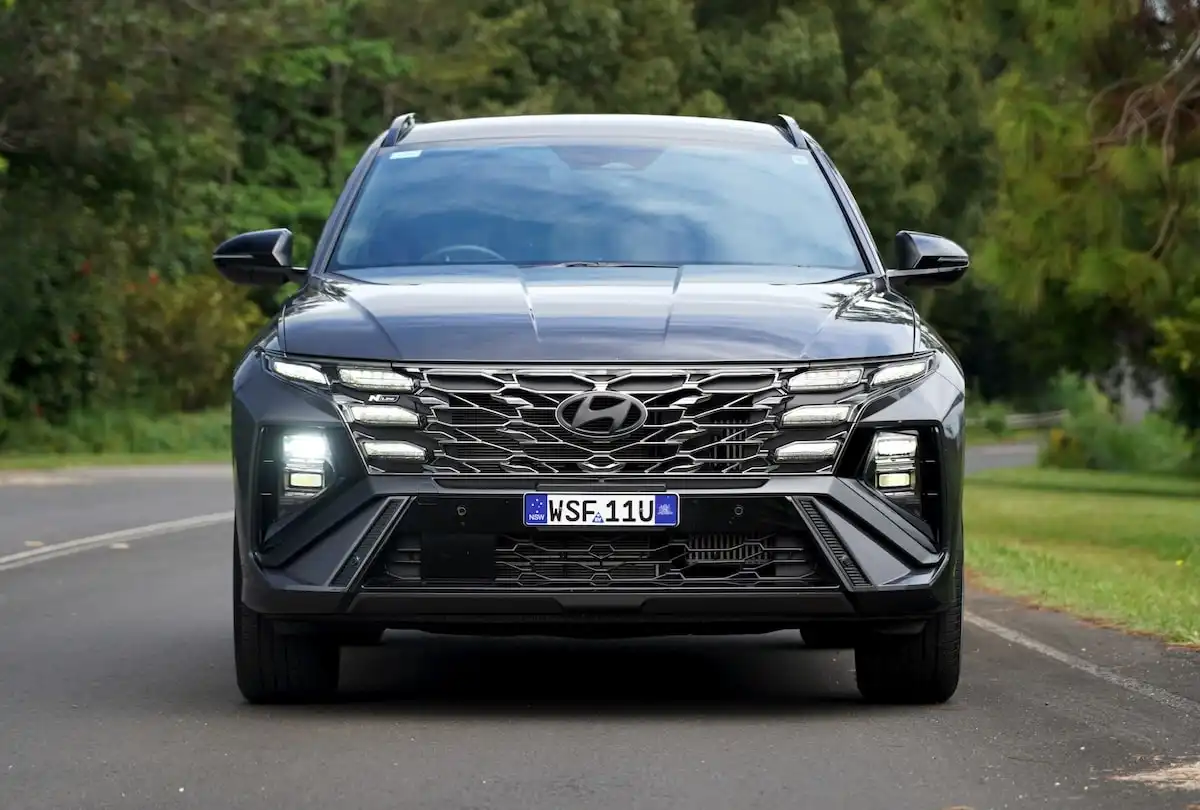
The hybrid powertrain transforms the driving experience behind the wheel, with the Tucson gracefully taking off from the line and handling a lot of the low and mid-range acceleration with EV power, alone.
Boot the throttle and the petrol engine kicks into life to provide most of the legwork for mid-range boosts and overtakes, with a nice, smooth transfer of power between the two.
It also offers a more responsive feel when you give it the gas, thanks to Hyundai sticking with a six-speed automatic transmission that elminates most of the delayed progression you’ll find in something like Toyota’a e-CVT powering its hybrid lineup.
At highway speeds, the Tucson’s brains will switch between electric and petrol power without you noticing, with Hyundai’s hybrid powertrain proving a properly smooth and refined system overall.
Hyundai offers three levels of regenerative braking, accessible via the wheel-mounted paddle shifters in ‘eco mode’ that become quite addictive if you’re trying to squeeze every ounce of efficiency out of the Tucson.
These paddles also double as traditional gear shifters when you’ve engaged the normal or sport driving modes.
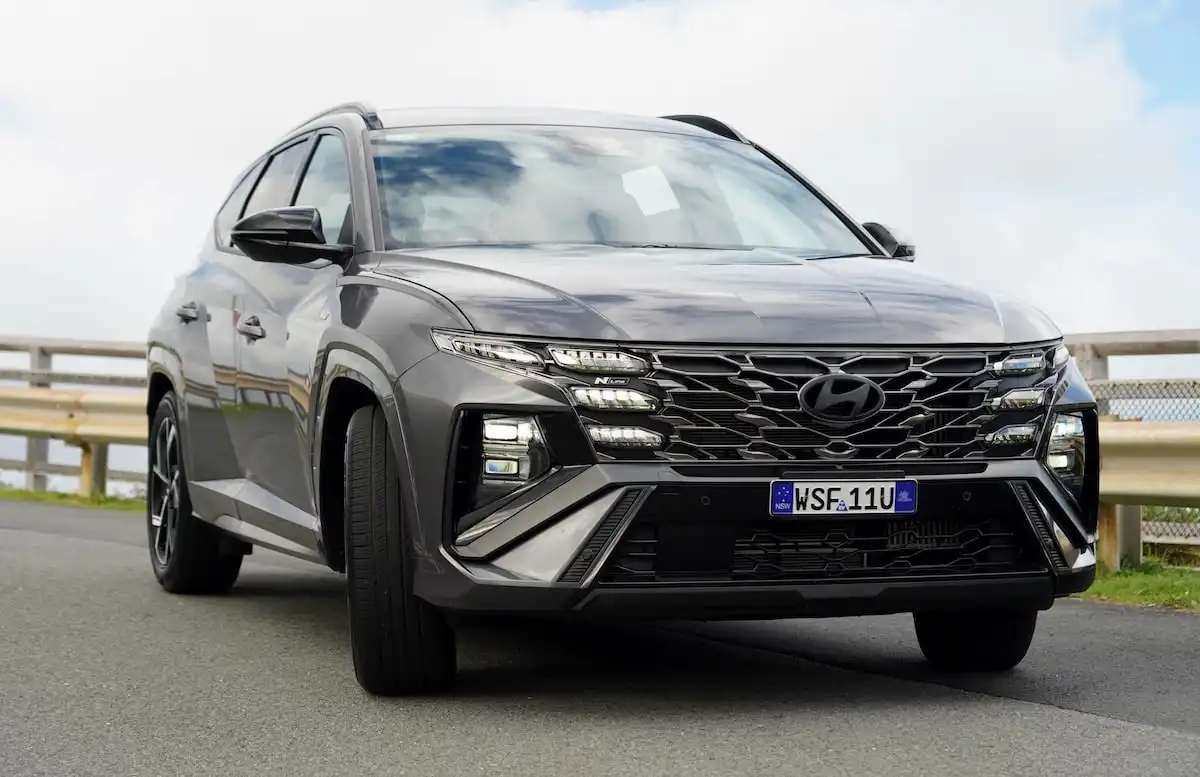
Around town, the Tucson has a great set of table manners, making it a perfect commuter for the urban jungle.
The steering feel is far too light for our tastes, though it remains extremely easy to throw around when you’re parking, while offering some more noticeable feedback as you pick up the pace.
The Tucson’s front end feels particularly nimble, which means it’s happy to dart through roundabouts and tackle tight spaces with ease.
Picking up the pace on a rougher stretch of country road and the Tucson is happy to keep up with some punishment, though the ride is noticeably firmer on the N Line’s 19-inch rims, with the 18-inch wheels fitted to the Elite range proving a wiser investment for country drivers.
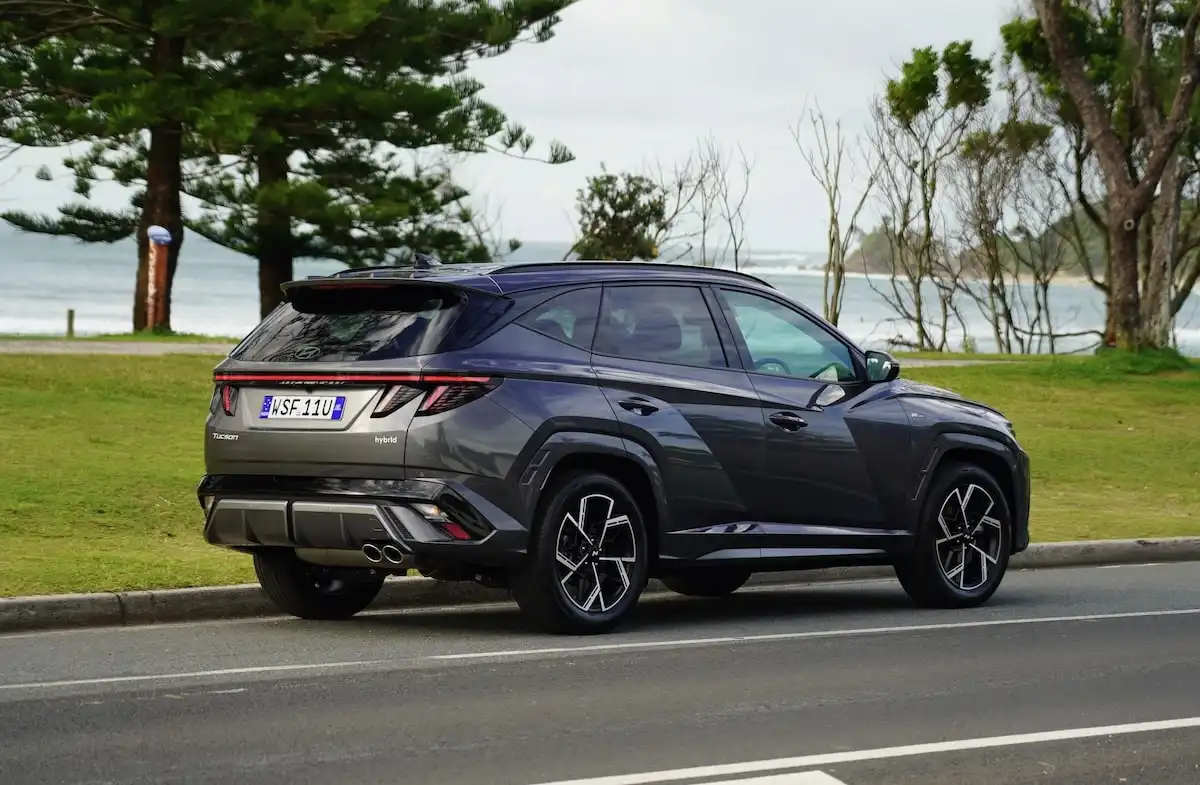
We will say, too, that you’ll really need to put its all-wheel drive system to use on the weekend to justify paying extra for the AWD variant, with the front-wheel drive hybrid version remaining an easy way to pocket some savings.
On the highway, the Tucson is a strong performer, ironing out bumps while remaining smooth and refined inside the cabin which made us feel like we could chew up a thousand clicks without much of an issue.
Overall, buyers stretching the budget to the hybrid version will indeed be happy with their decision thanks to the added levels of silent refinement behind the wheel, though once again, stretching the budget even further for an all-wheel drive version feels a bit like overkill.
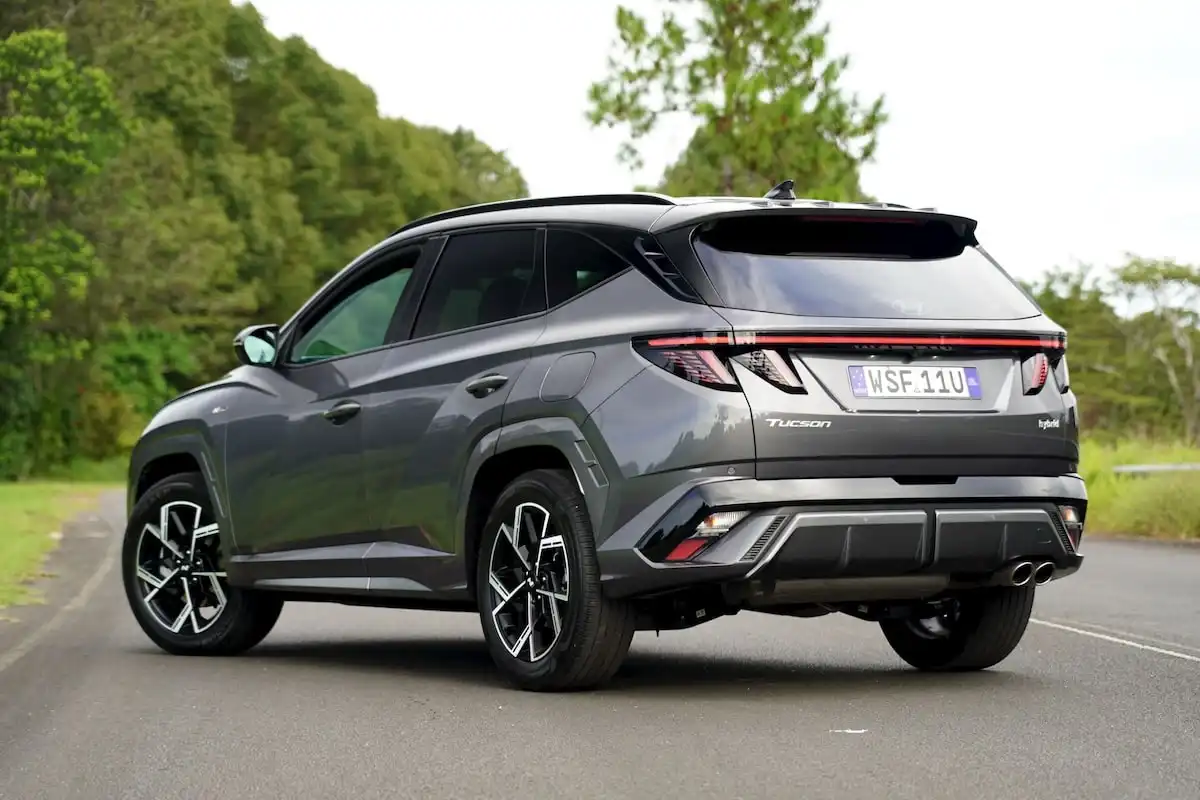
Is the Hyundai Tucson Elite Hybrid AWD Fuel Efficient?
It certainly is, though we weren’t able to match Hyundai’s official claims.
That said, without much of an effort paid to our driving style, we were able to extract some impressive fuel economy figures for an all-wheel drive, midsize SUV package that put Hyundai hot the heels of even the segment’s best.
On a combined cycle, Hyundai says the Tucson Hybrid range will sip 5.3L per 100km in both FWD and AWD versions.
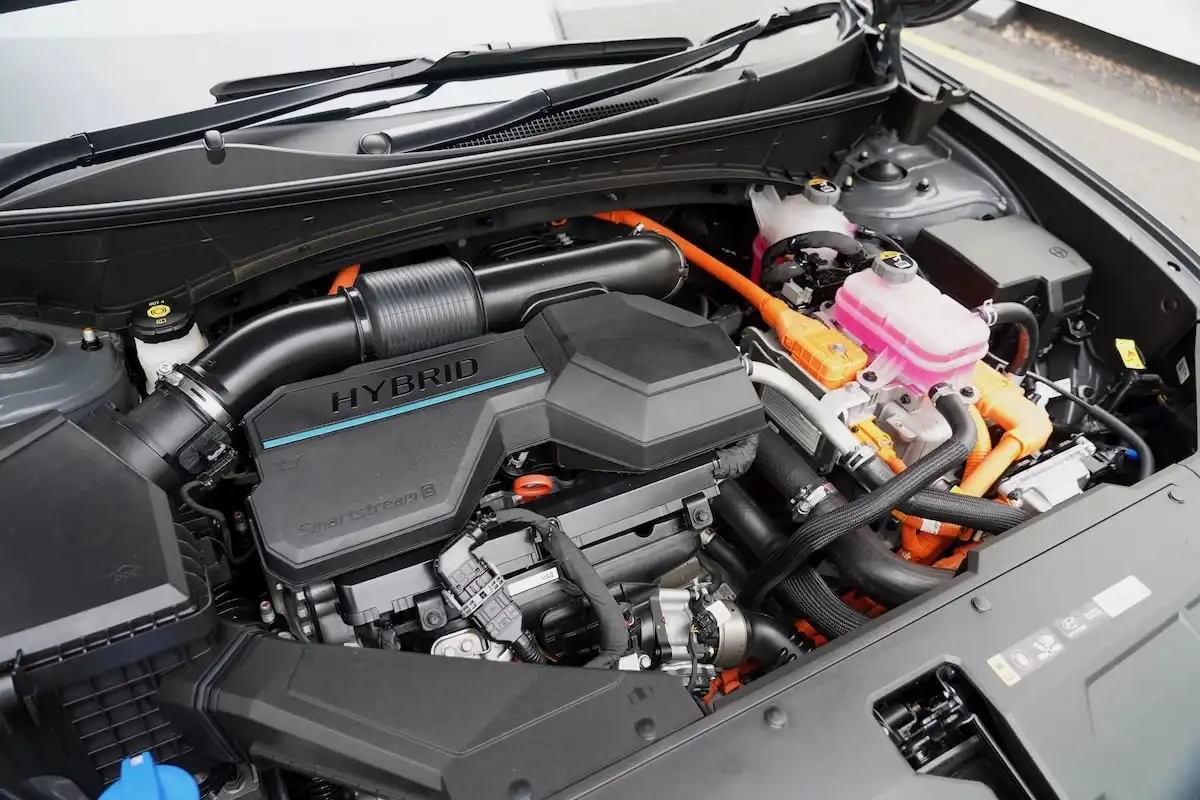
For reference, the Tucson 2.0-litre petrol is rated at 8.1L per 100km while the Tucson 1.6-turbocharged four-cylinder drinks between 6.7 - 7.2L per 100km.
That means there’s not a huge margin between the 1.6T and the hybrid, though even small differences add up considerably over time.
During our week behind the wheel covering 945km, we averaged 5.7L per 100km.
This shows that it’s possible to get close to Hyundai’s official claims and we have no doubt that with a particularly light right foot, you’d be able to match the 5.3L/100km figures.
-
Tucson Hybrid AWD City Consumption: 3.6L/100km
-
Tucson Hybrid AWD Highway Consumption: 6.5L/100km
-
Tucson Hybrid AWD Combined Consumption: 5.3L/100km (claimed)
-
Tucson Hybrid AWD Combined Consumption: 5.7 per 100km (tested)
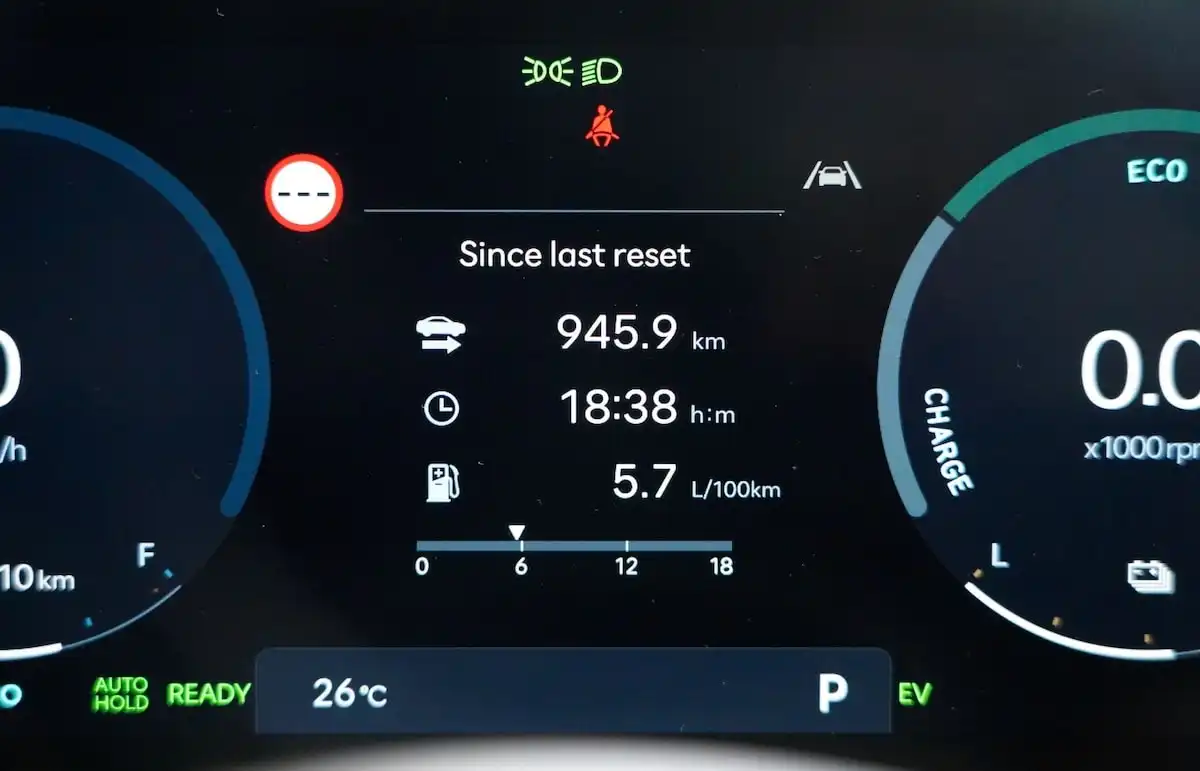
Is the Hyundai Tucson Practical and Spacious?
The Tucson knocks it out of the park when it comes to family-friendly practicality.
Buyers upgrading to the Elite range and splurging out on the N Line package are treated to no shortage of premium finishes that make it a more mature experience inside the cockpit.
Climb aboard and you’re greeted with a neat, futuristic cabin design that both looks and feels great in the Elite N Line version.

The base model’s cloth upholstery makes way for a mix of leather and suede, which certainly adds some luxury into the mix, while the digital instrument cluster makes a more high-tech first impression in this format.
That said, all the Tucson fundamentals that you’ll find in the base model are here on show and they make for a seriously impressive and super practical cabin layout that offers no shortage of storage options and great ergonomics.
The seating position has a solid range of adjustment, so too does the steering wheel with both manual reach- and rake-adjustment.
Headroom for tall adults is not a problem thanks to the low-slung position of the seat’s Southernmost setting, while forward and side visibility both get solid marks, as does the feel of the switchgear.
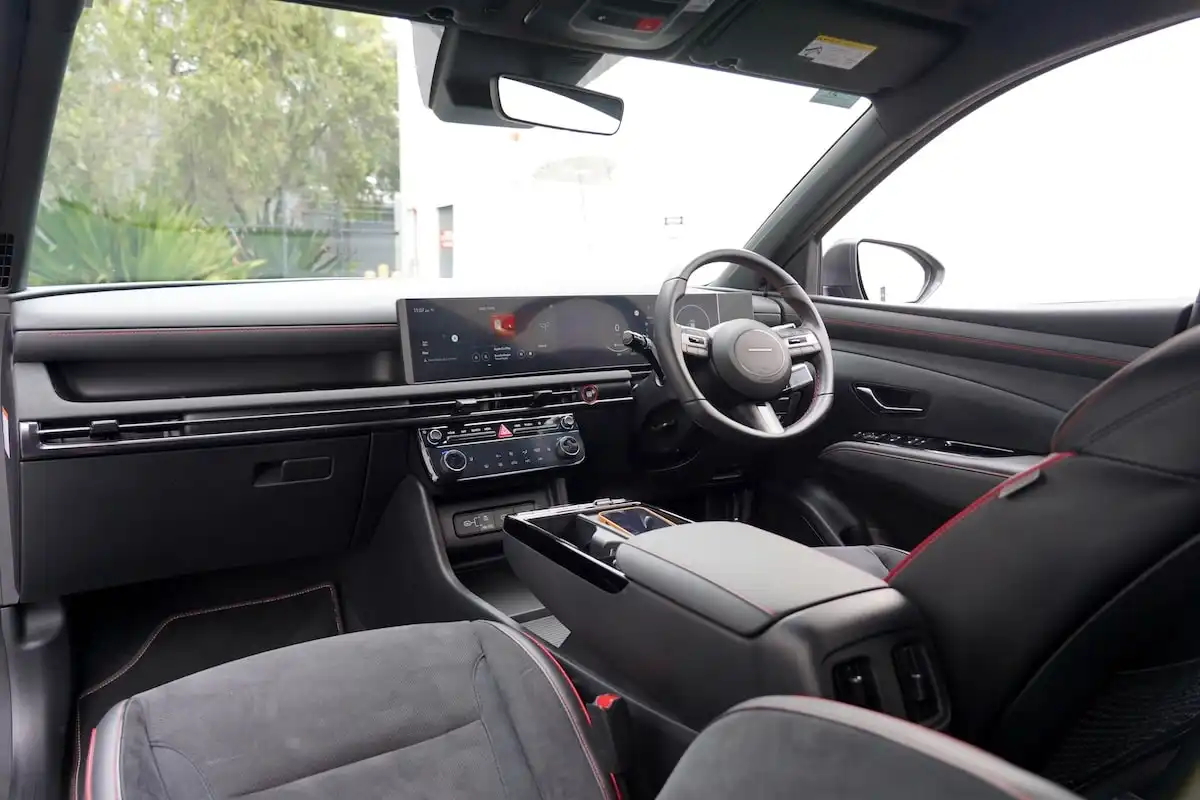
The gear lever has been relocated to the steering wheel, clearing up the outer edge of the centre console, which now houses the driving mode, terrain selector, auto hold, hill descent and parking camera buttons.
The centre console is nice and substantial, housing a pair of cup holders and a rubber-lined wireless charging pad, atop some added storage inside the folding armrest.
Notably, each of the driver’s armrests on either side has a nice, soft-touch finish.
The centre console features a cavernous cut-out below with two separate storage areas which, combined, offer some serious accommodation for the loose items that families accumulate.

Move to the rear of the cabin and things remain impressive, with no shortage of legroom for adults sitting behind a tall driver, meaning you won’t hear any complaints from kids back here.
The Tucson’s healthy wheelbase footprint keeps things spacious in the second row, with no issues in terms of headroom for adults in the second row and the added bonus of a reclining bench.
Amenities come in the form of a pair of USB-C charging ports, map pockets, a folding armrest with cupholders, air vents and some bottle holders inside the door sills.
All up, the Tucson remains one of the leading, family-friendly options in the midsize SUV segment thanks to its generous wheelbase and some particularly clever interior packaging from the company.
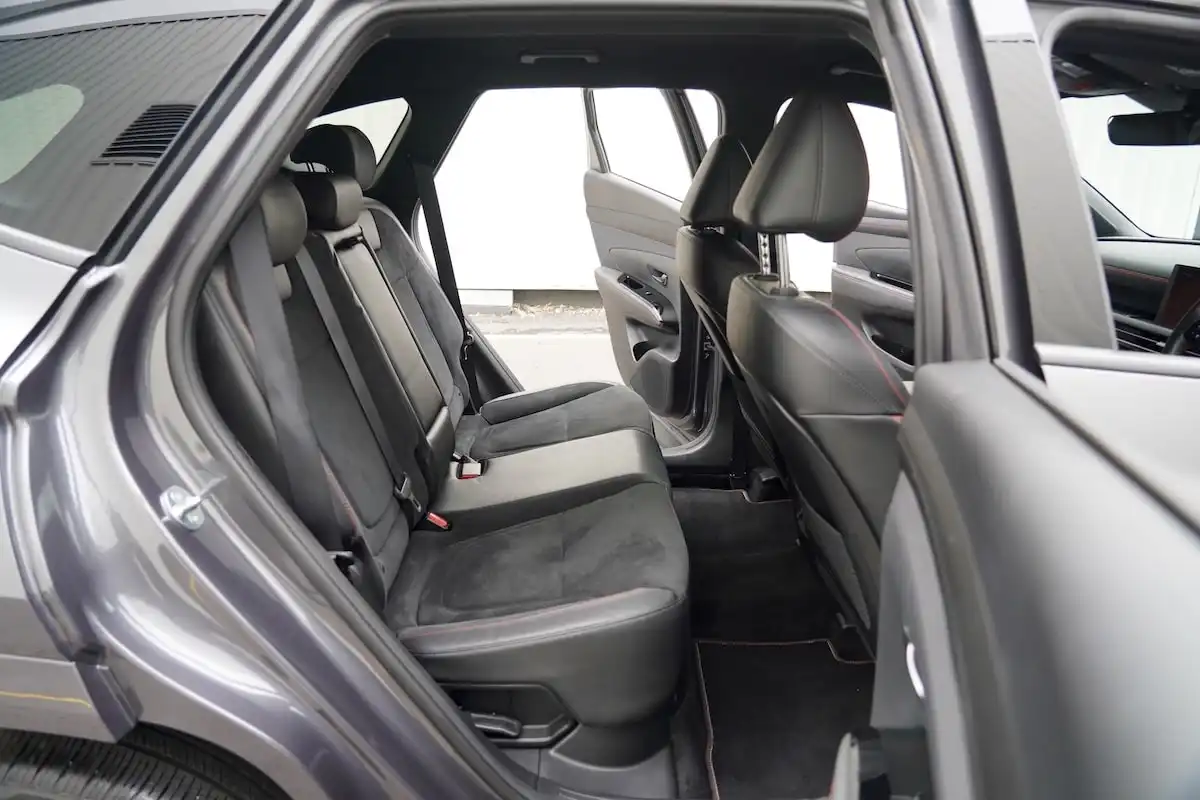
How Big is the Hyundai Tucson’s Boot?
The Tucson rounds out its family-friendly proposition with a very healthy amount of real estate in the boot.
With the seats standing in a five-seat format, the Tucson hybrid range has a boot measuring 582L, putting it amongst some of the largest in the segment.
Fold the rear seats down and you’ll unlock 1,903L worth of cargo space when it’s time to lug around sports gear and bulky items, making it a seriously practical rear end.
Interestingly, there’s more boot space on offer in the Tucson hybrid range than its petrol-powered siblings, due largely to the fact there’s a space-saver spare tyre hiding beneath the boot floor over a full-sized spare in the Tucson petrol range.
-
Tucson Hybrid Boot Space Minimum: 582L (539L in Tucson petrol)
-
Tucson Hybrid Boot Space Maximum: 1,903L (1,860L in Tucson petrol)
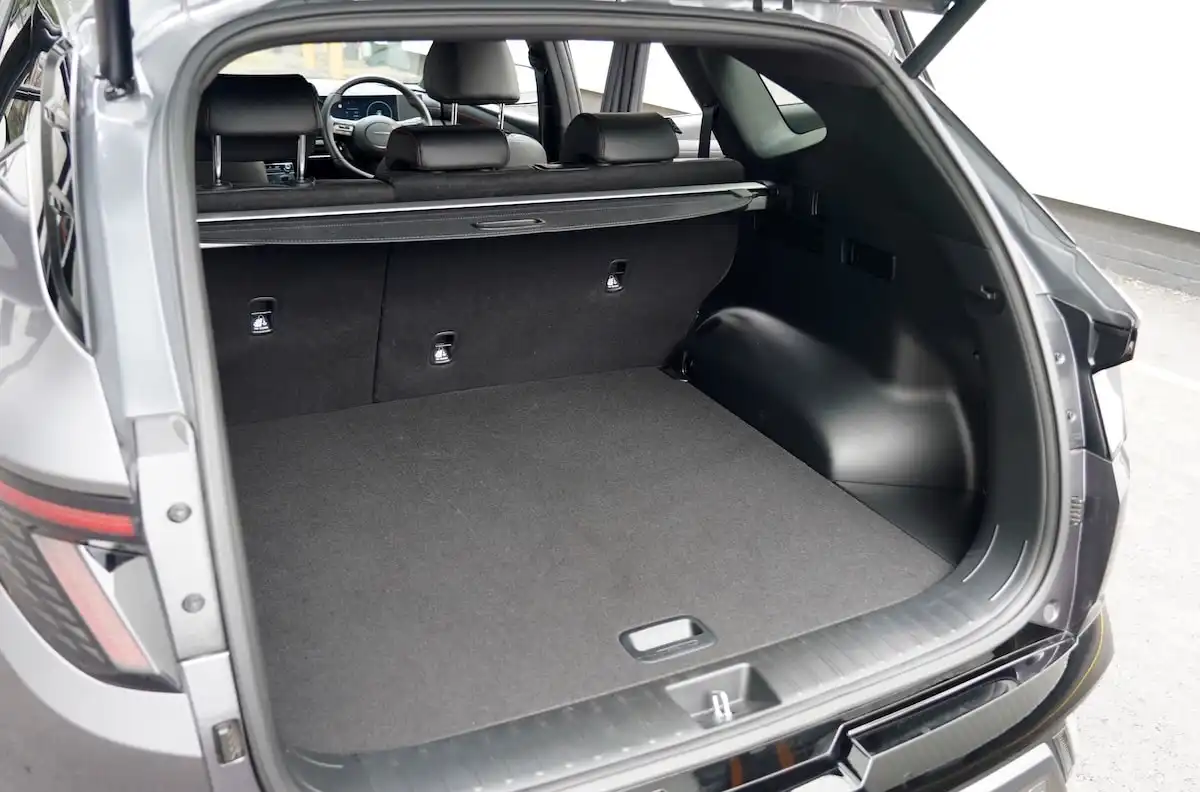
Is it Safe?
Hyundai packages the Tucson range with an extensive safety list, even in the base model.
That means you can expect to pick up AEB with pedestrian and cyclist detection as well as junction assist, blind-spot and rear cross-traffic assistance and adaptive cruise control in the entry-level Tucson.
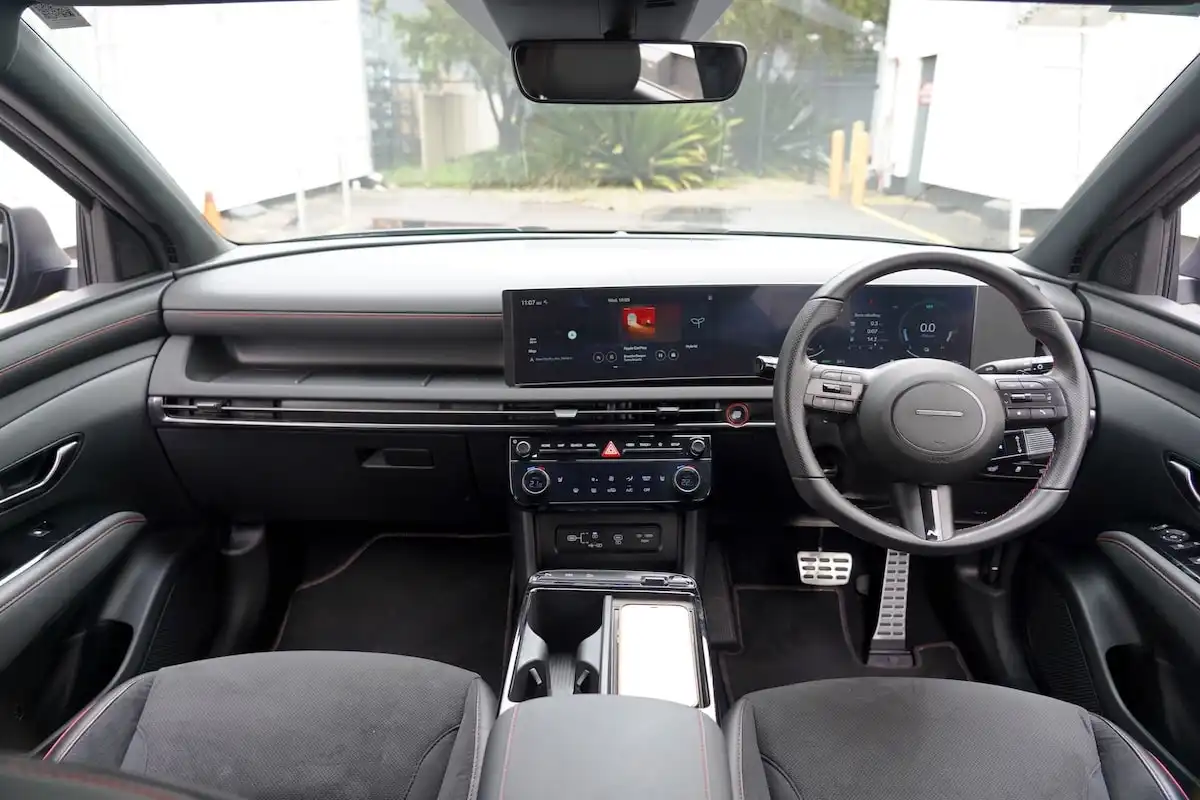
You’ll also pick up lane-keep assist with lane-centring, a rear-view camera with rear parking sensors, safe exit alerts, tyre pressure monitoring, rear occupant alerts, speed-limit assist and seven airbags inside the cabin.
Upgrading to the Tucson Elite range adds a set of rear-mounted parking sensors, Hyundai’s Highway Driving Assist and navigation-based smart cruise control.
A Blind-spot view monitor, reverse AEB and a surround-view monitor are all reserved for the range-topping Tucson Premium, the latter of which is a big omission at this price point.
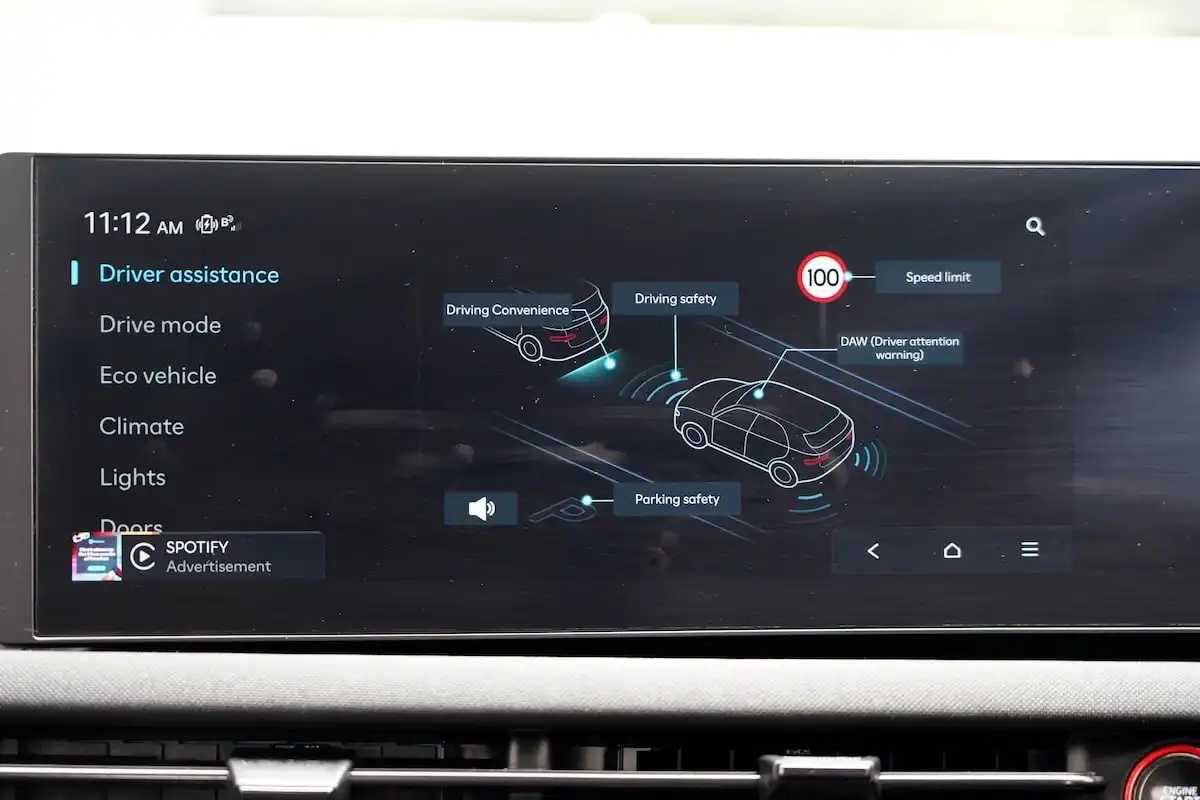
Does the Hyundai Tucson Have an ANCAP Safety Rating?
The Hyundai Tucson range wears a five-star ANCAP safety rating after testing in 2021 saw it score the following marks.
-
Adult Occupant Protection: 86%
-
Child Occupant Protection: 87%
-
Vulnerable Road User Protection: 66%
-
Safety Assist: 70%
The Tucson’s five-star ANCAP safety rating applies to all variants, including the hybrid, and is set to expire in December, 2027.
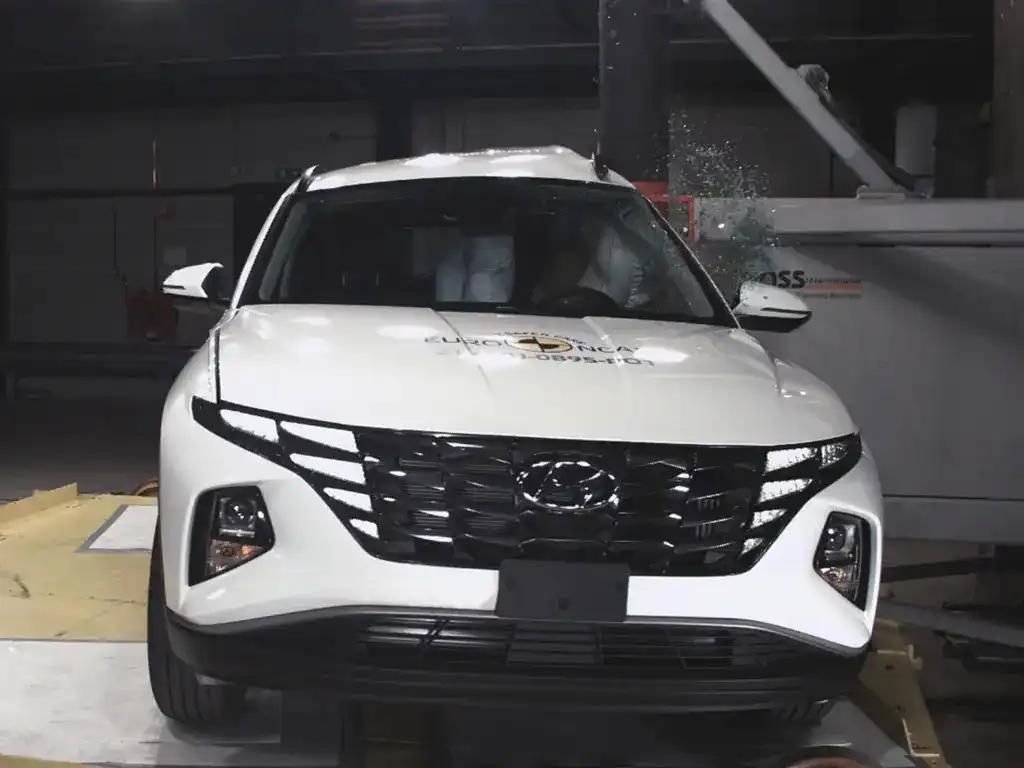
What Warranty Does the Hyundai Tucson Come With?
Hyundai offers the Tucson range with a five-year/unlimited-kilometre warranty.
The Tucson hybrid range also picks up a separate eight-year/160,000-kilometre warranty for the battery and high-voltage components.
Buyers also pick up a lifetime roadside assistance membership if you keep it serviced on time, within the Hyundai network.
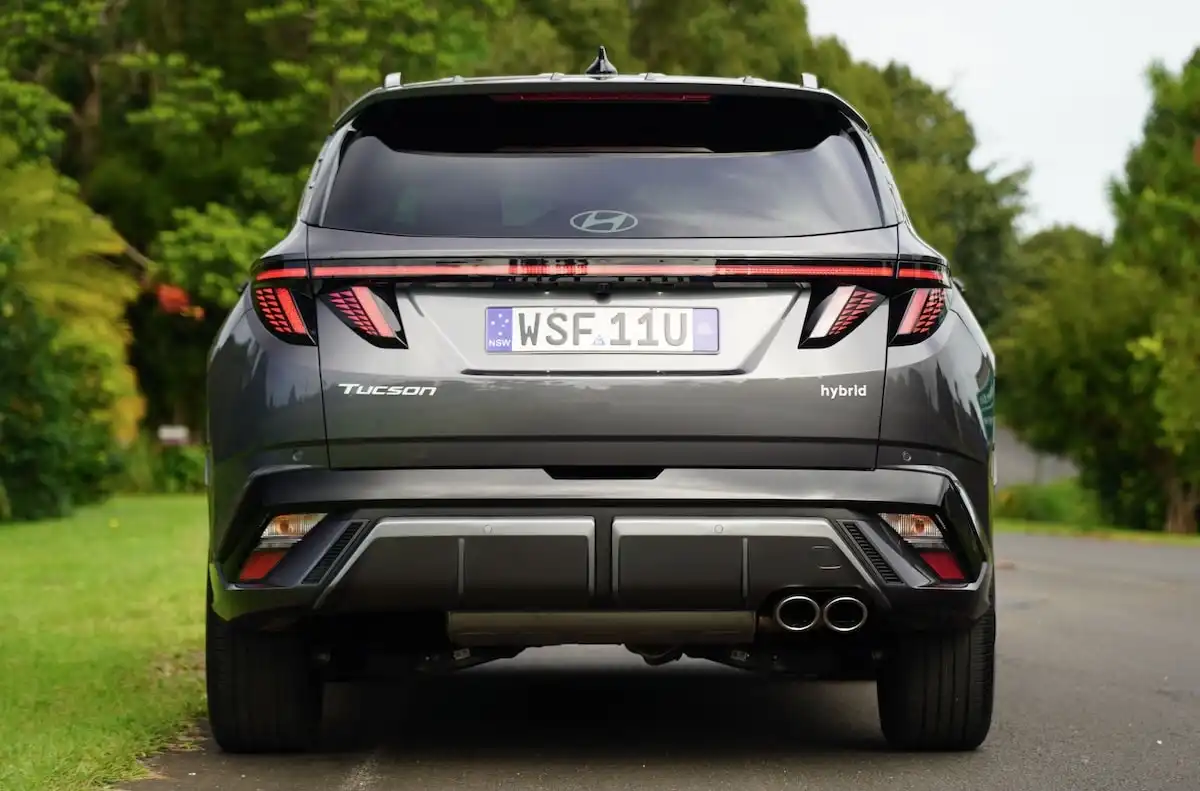
Hyundai offers capped-price servicing plans for three, four and five years for the Tucson range, which are priced between $1,240 and $2,040; we’ll list full pricing below.
Servicing costs are at a slight premium over the regular petrol-powered Tucson range - $2,040 compared to $1,799 - but the difference isn’t huge and the hybrid picks up that added eight-year warranty for the battery and high-voltage components.
-
Tucson Hybrid Three-Year Servicing Costs: $1,240
-
Tucson Hybrid Four-Year Servicing Costs: $1,700
-
Tucson Hybrid Five-Year Servicing Costs: $2,040
Service intervals for the MY25 Tucson range stand at 12 months or 10,000 kilometres, whichever elapses first.
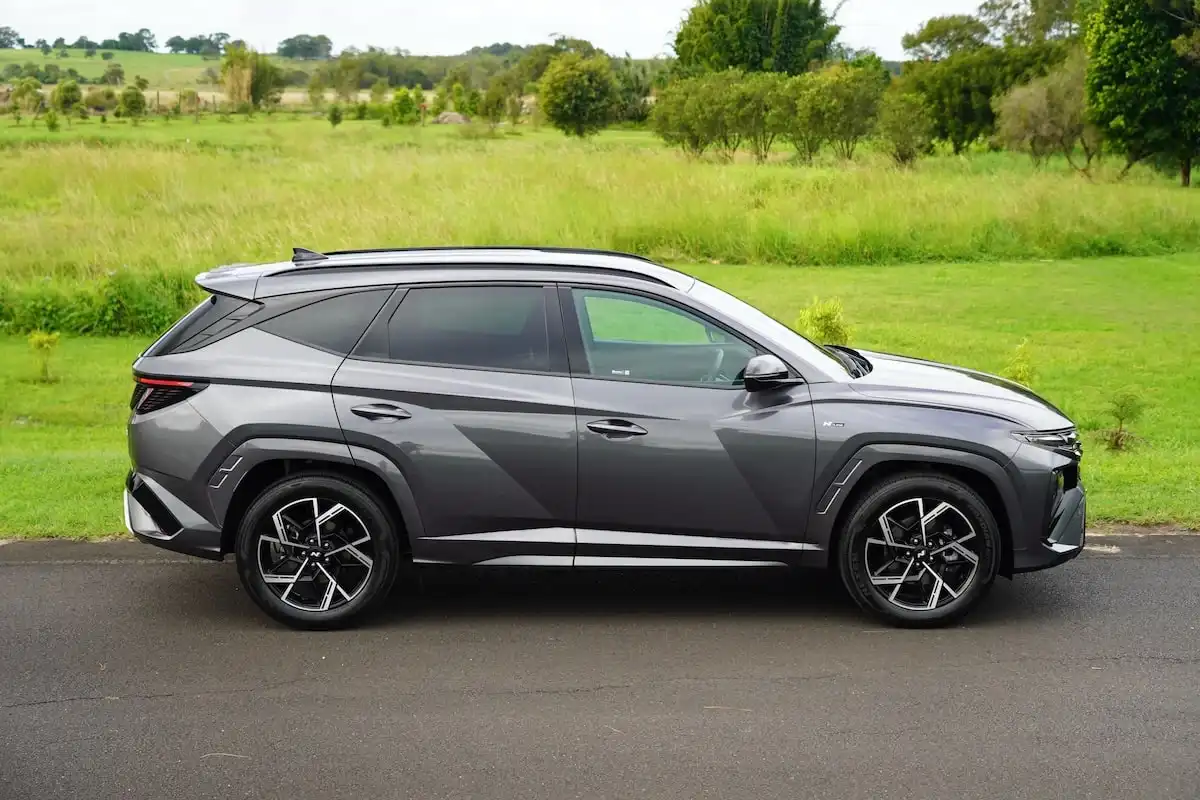
Our Verdict: Is the Hyundai Tucson Elite N Line Hybrid Worth it?
The Hyundai Tucson is a fantastic package, while the addition of a hybrid powertrain in the mix only bolsters its appeal as a family-friendly and fuel-efficient midsize SUV package.
All across the board, the latest Tucson range confidently ticks the all-important boxes for families thanks to its incredibly practical cabin with ample storage options up front, a healthy technology package and lengthy safety equipment list.
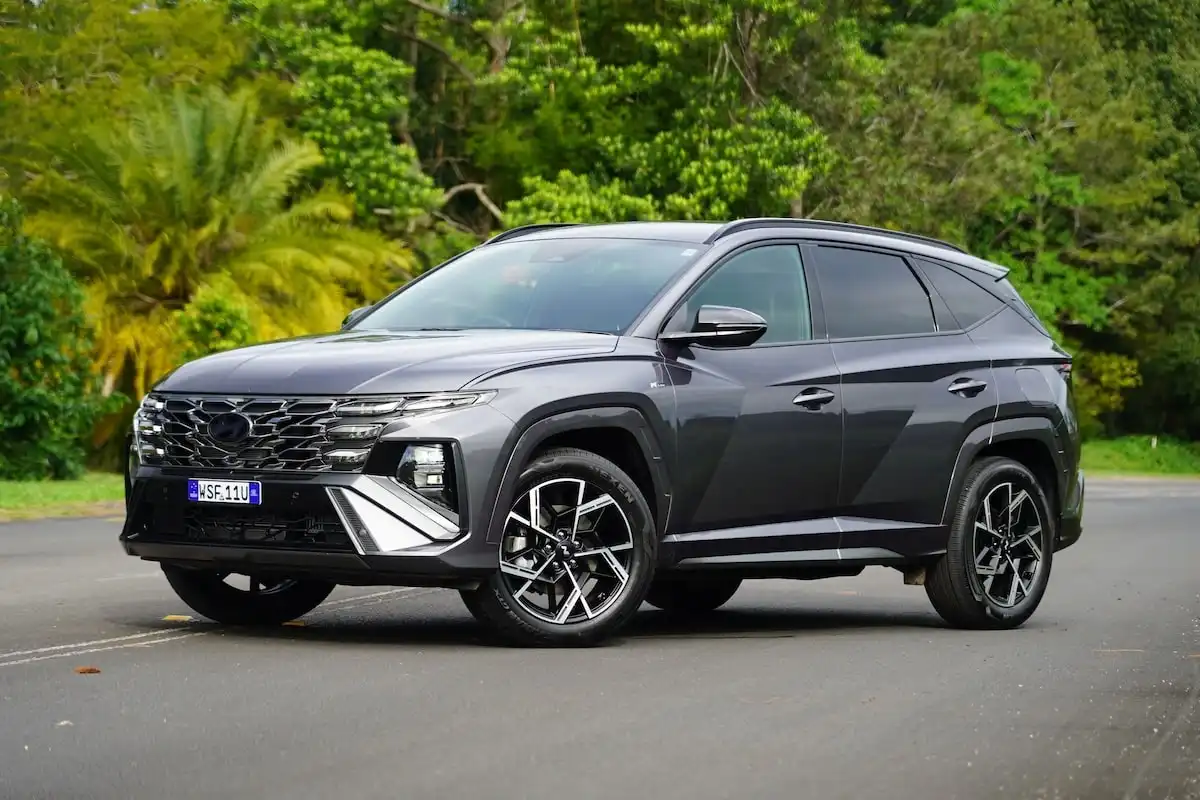
The cost of upgrading to the hybrid range is steep, no doubt, though the fuel efficiency gains are accompanied by a more refined driving experience that does, in our opinion, make for a worthwhile upgrade.
Think twice about upgrading to the all-wheel drive version for the sake of it, though.
Do you need all the bells and whistles found in the Elite N Line? That’s up to you to decide, but we can say definitely that Hyundai’s premium additions are substantial, adding charisma to the look outside and the feel inside the cabin.
If we were voting with our wallet, we’d be having a close look at either the base hybrid or the regular Elite hybrid without the N Line package for both value and the added ride comfort of the 18-inch wheels.
Don’t forget that our team of car-buying experts is ready to help find you the best possible deal on your next car… reach out today.
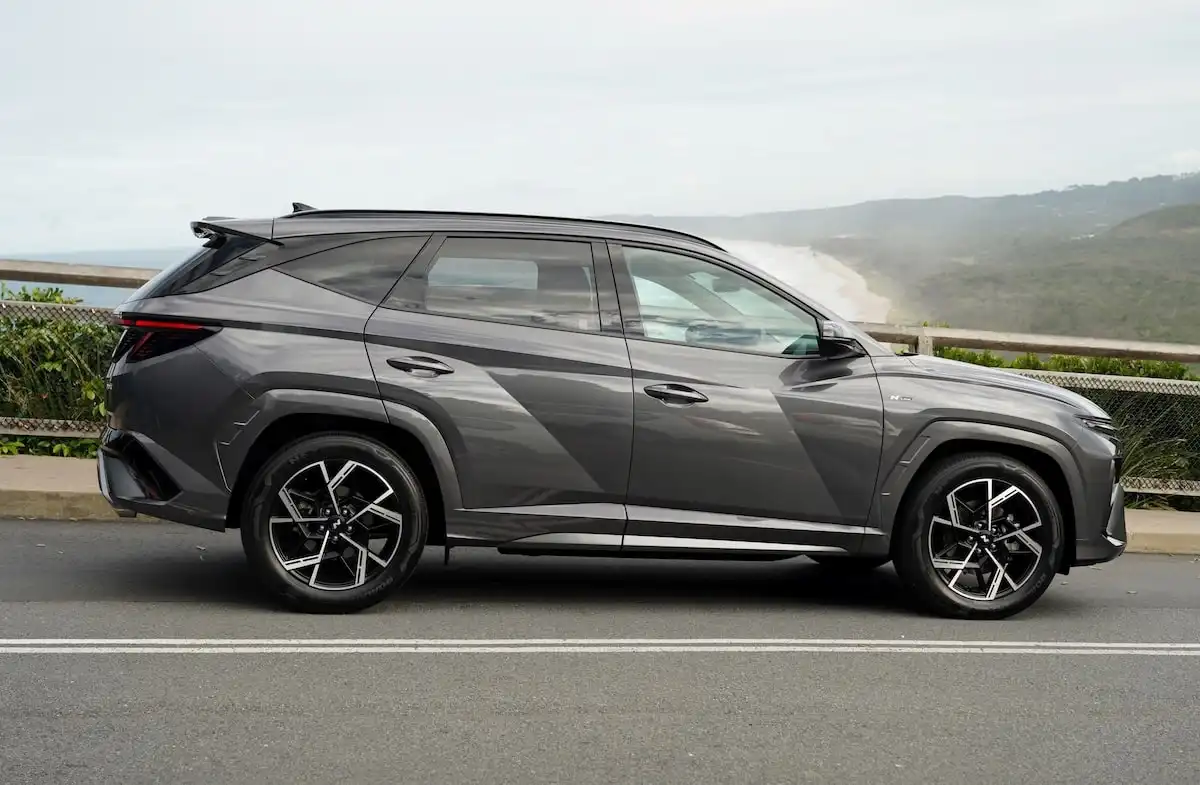
Five Hyundai Tucson Specs You Need to Know
-
Five-year/unlimited-kilometre warranty
-
Eight-year/160,000 hybrid warranty
-
5.3L per 100km fuel economy figures
-
582 - 1,903L boot space
-
Five-star ANCAP safety rating (tested 2021)
Get in touch with one of our Car Buying Specialists today.
Request a quote